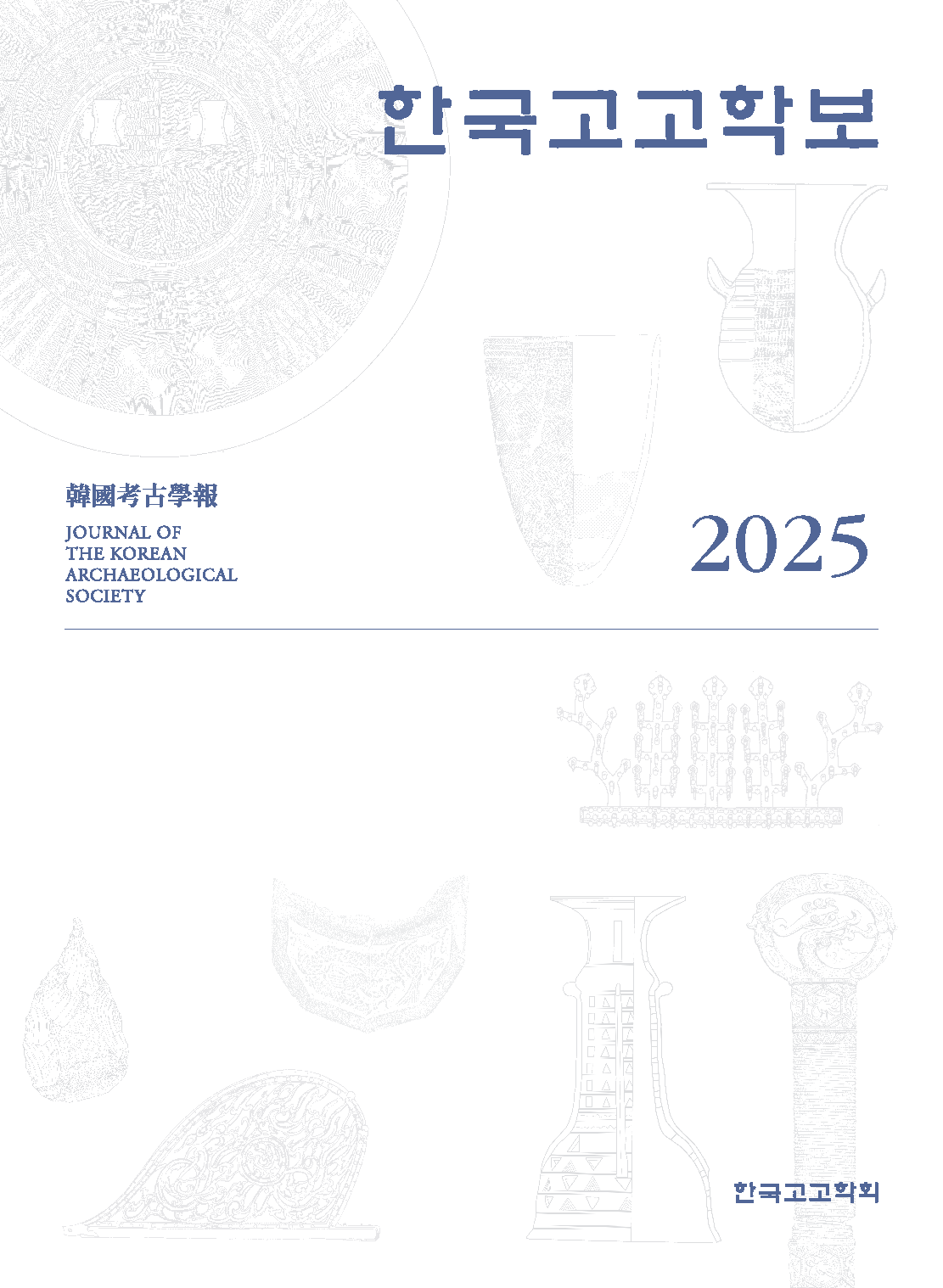학술논문
발해 사원지 출토 녹유기와의 지붕 意匠과 大寺
이용수 39
- 영문명
- Architectural Decoration and Symbolism—Green-Glazed Roof Tiles from Balhae Temple Sites and Their Relation to Major official Temples
- 발행기관
- 한국고고학회
- 저자명
- 양은경
- 간행물 정보
- 『한국고고학보』제135집, 417~442쪽, 전체 26쪽
- 주제분류
- 인문학 > 역사학
- 파일형태
- 발행일자
- 2025.06.30
5,920원
구매일시로부터 72시간 이내에 다운로드 가능합니다.
이 학술논문 정보는 (주)교보문고와 각 발행기관 사이에 저작물 이용 계약이 체결된 것으로, 교보문고를 통해 제공되고 있습니다.

국문 초록
본고는 기왕의 발해 불교고고학에서 상대적으로 주목받지 못했던 녹유기와를 연구 대상으로 삼아, 녹유지붕의 의장 양상과 상징적 의미, 그리고 주변국과의 비교를 통해 드러나는 문화적 독자성을 고찰하고자 하였다. 연구 방법은 기존의 거시적 접근, 즉 녹유기와의 연대에 대한 검토에서 벗어나, 유구별 기와의 종류와 지붕 의장에 대한 구체적인 양상을 추적하는 미시적인 분석을 시도하였다.
지금까지의 고고자료를 기초로 발해 녹유지붕 의장을 검토한 결과, 녹유기와는 주로 궁전과 사찰 지붕에 한정적으로 사용되었으며, 지붕 전체를 녹유기와로 올린 경우와 부분적으로 사용한 경우 등 최소한 두 가지 유형의 지붕 의장 방식이 존재한 것으로 추정하였다. 또한 사찰 건물에는 후자가 두드러진 반면, 궁전 건물에서는 전·후자가 병존했을 가능성을 제시하였다. 특히 단색 녹유수키와와 치미를 비롯하여, 다색유로 시유된 용두와 토수의 존재는 발해의 국가급 위계를 상징하는 國家大寺 또는 大寺를 시사하는 중요한 속성으로 간주할 수 있었다. 아울러 다양한 유약 색조와 함께 나타나는 기와의 종류와 크기는 발해의 大寺 간 등급 및 위계를 구분할 수 있는 지표로 기능하였던 것으로 추정하였다.
중국의 녹유기와는 북위부터 본격적으로 등장하여 수·당으로 계승되는데, 이 시기 중국의 녹유지붕 의장은 발해와 달리 흑색 마연기와와 혼용된 사례를 포함하는 등 복잡하고 다양한 양상을 보인다. 한편, 동 시기 통일신라의 녹유기와는 백제와 당의 양식이 혼합되어 마루끝단장식기와나 부연·연목 부재 등 일부 부위에 제한적으로 사용되거나, 단색 녹유전돌이 유행하는 등 통일신라 고유의 녹유지붕 의장을 형성한다. 이에 비해 발해의 녹유기와는 당 문물의 영향을 받으면서도, 그 수용 과정에서 뚜렷한 현지화 양상을 드러낸다. 예컨대, 당에서 널리 사용된 흑색 마연기와뿐만 아니라 통일신라에서 유행한 녹유전돌의 사용은 드문 반면 녹유용두와 주좌(기둥밑장식)를 적극적으로 활용한 것은 발해만의 독자적인 특징으로 간주하기에 충분하다.
영문 초록
This study focuses on green-glazed tiles of the Balhae Kingdom, a subject that has received relatively little scholarly attention within the field of Buddhist archaeology. It aims to investigate the stylistic characteristics and symbolic meanings of Balhae's greenglazed roofing, and to examine the cultural distinctiveness revealed through comparative analysis with neighboring countries. Methodologically, this study moves beyond the conventional macro-level approach, which primarily concentrated on typological dating, and instead adopts a micro-analytical framework that traces specific types of tiles and roof decorations according to architectural features and structural remains.
Based on extant archaeological materials, the study finds that green-glazed tiles in Balhae were predominantly used on roofs of palatial and temple architecture. At least two distinct roofing styles appear to have existed: one where the entire roof was covered in greenglazed tiles, and another where such tiles were used selectively. The latter style is more prominently identified in temple buildings, while both styles likely coexisted in palace structures. Notably, the use of monochrome green-glazed flat tiles and ornamental ridgeend tiles, along with multicolored lead-glazed dragon head ridge ornaments and drain spouts, served as key architectural elements symbolizing the state-level status of the temples, often interpreted as national temples or major official temples. In addition, the variety in tile types, sizes, and glaze hues likely functioned as indicators for distinguishing hierarchical gradations among temple institutions.
In contrast, Chinese green-glazed roof tiles first emerged during the Northern Wei period and continued through the Sui and Tang dynasties. The glazed roofing systems of this era reveal more complex and diverse configurations than those of Balhae, often incorporating a combination of green-glazed and black-burnished tiles. Meanwhile, in Unified Silla, green-glazed tiles reflected a hybridization of Baekje and Tang architectural styles, being selectively applied to architectural elements such as eaves-end decorative tiles, supporting eaves and rafter members, along with the widespread use of monochrome green-glazed bricks. Compared to these cases, Balhae's glazed roofing clearly displays a process of indigenization despite the influence of Tang material culture. For instance, whereas the black burnished roof-tiles widely used in Tang China and the green-glazed bricks favored in Unified Silla are scarcely found in Balhae, the prominent application of green-glazed roof-end tiles and column base ornaments (jujwa) is sufficient to be considered a distinctive characteristic unique to Balhae.
목차
Ⅰ. 머리말
Ⅱ. 발해 녹유기와를 통한 지붕 의장과 대사
Ⅲ. 주변국 사례를 통한 지붕 의장과 대사
Ⅳ. 맺음말
참고문헌
해당간행물 수록 논문
참고문헌
관련논문
인문학 > 역사학분야 NEW
- 혜원 신윤복의 산수화 연구 Ⅱ - 단원 김홍도와의 관계와 영향을 중심으로
- 조선국권회복단의 조직과 성격에 관한 검토
- 로마 제국과 한 제국의 관계에서 실크로드의 역할 - 경제·문화적 교량으로서 실크로드를 중심으로
최근 이용한 논문
교보eBook 첫 방문을 환영 합니다!

신규가입 혜택 지급이 완료 되었습니다.
바로 사용 가능한 교보e캐시 1,000원 (유효기간 7일)
지금 바로 교보eBook의 다양한 콘텐츠를 이용해 보세요!



